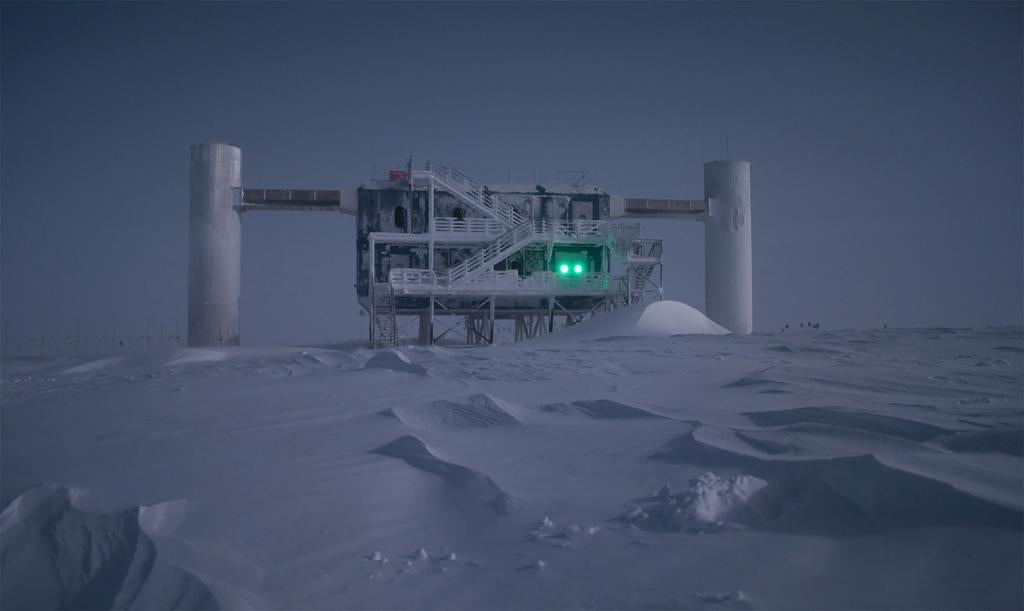Atlas Obscura on Slate is a new travel blog. Like us on Facebook, Tumblr, or follow us on Twitter @atlasobscura.
Call it a telescope, call it a detector, or call it an observatory—it’s all the same to the University of Wisconsin scientists at the IceCube South Pole Neutrino Observatory, which is now the world’s largest neutrino research array. Constructed between 2005 and 2010, the IceCube array consists of 86 identical holes, drilled 1.5 miles deep, scattered throughout the ice and filled with extremely sensitive particle physics monitoring equipment.
The IceCube is a tangential facility of the much larger Amundson-Scott South Pole Station, both of which are literally located at the South Pole in Antarctica. The temperature here is a deadly minus 75 degrees Fahrenheit.
IceCube researchers look for signs of tiny subatomic particles called neutrinos as they streak through the crystal clear ice thousands of feet below the surface. Neutrinos are one of the most mysterious building blocks of the universe. While studying them is notoriously difficult, the more scientists understand about their behavior, the more they will be able to explain how the universe works.
More heralded and easily understood than the science of the lab is remarkable engineering it took to create it. Beyond the extreme difficulties of travel and habitation at the South Pole, the drilling of the all-important holes used for the array’s sensors is an engineering marvel. Using highly advanced equipment, scientists bored into the earth with an ultra-high-pressure hot water drill, not unlike a massive power washer. Each tube took approximately 40 hours to drill.
Antarctica seems like a long way to go to measure one tiny particle. But the darkness and purity of the subsurface ice at the South Pole creates a naturally ideal environment for detecting neutrinos, which almost never actually interact with matter—making them very hard to measure. It is only when one accidentally collides with another particle and creates a reaction that a neutrinos presence be can examined, and that is difficult to create in a lab environment. Collisions are more likely to be seen by happenstance over a large area, such as the gigantic IceCube array.
More on the IceCube Neutrino Observatory can be found on Atlas Obscura.

Awe-inspiring observatories:
